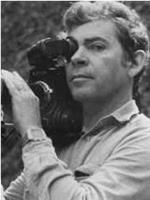雨果·策普 Hugo Zemp

- 性别:男
- 职业:导演
雨果·策普 Hugo Zemp简介
影人资料
As an adolescent Hugo Zemp wanted to become a jazz musician, and at the age of 20 entered in a three-year program of percussion at the Conservatory of Basle, his hometown in Switzerland. In 1958, at the age of 21, he travelled to Côte d’Ivoire to experience African percussion. There he met André Schaeffner, the father of French ethnomusicology from the Musée de l’Homme in Paris, and his wife Denise Paulme, professor of anthropology. Seeing Zemp’s enthusiasm for African music, they invited him to come to Paris to study. He finished his musical studies and began studying anthropology, linguistic and ethnomusicology in Paris.Conducting his fieldwork between 1961 and 1967 in the Côte d’Ivoire, mostly among the Dan people, Zemp wrote a doctoral thesis that garnered interest among French- and English-speaking ethnomusicologists studying West African music. He also made shorter stays among other peoples to document and record their music, among these the Senufo, whose balafon music impressed him so much that he returned to Côte d’Ivoire forty years after his first encounter to make the ****-film series Masters of the Balafon. In 1967 he became researcher at the CNRS (Centre National de la Recherche Scientifique) at the Ethnomusicology Department of the Musée de l’Homme, in Paris, where he worked until his retirement in 2004.An important ***** for Zemp’s professional life was an encounter with Daniel de Coppet, whose sound recordings from the ‘Are’are people of the Solomon Islands almost let him forget African music for a time! Hugo Zemp started a new fieldwork period in 1969 with a 16mm camera, ****** all of the mistakes of a beginning filmmaker. Zemp began to find his way into ethnographic filmmaking with the **** of friend and ethnographic filmmaker, Jean-Dominique Lajoux, as well as all of the books he could find on documentary filmmaking and the films of Jean Rouch.An esthetic shock was watching Rouch’s film Tourou ** Bitti, a nine-minute sequence shot on a possession ritual in Niger. This film and the writings of Jean Rouch persuaded him that long takes with a moving camera, and without zooming, could be the ideal strategy for filming music in the field. On his second field trip to the Solomon Islands in 1974, Zemp made the film ‘Are’are Music to show the native classification of music, explained by a ****** musician. With its richness of musical types and the beauty of the polyphonic instrumental and vocal music in the film, it was and still is an important ***** for ethnomusicologists. Zemp, though, remained unsatisfied with the artificial shooting techniques (he urged the musician to be short because of limited film stock), and because many musical types had to be shot out of context.Zemp went on to make a series of **** films about the traditional local yodelling of a mountain valley in his home country Switzerland, learning from watching David McDougall’s films to use subtitled conversations to transmit verbal information. Next was a film about overtone or bi-phonic singing, The Song of Harmonics, which showed for the first time sound synchronized shots of x-ray and of spectral analyses. At the invitation of Georgian anthropologists met at a film festival in Estonia, he shot his two first videos in the Georgian Caucasus in 1991 and then returning to his first love, African music, he made his series on Senufo balafons, and two films on ***** music of Côte d’Ivoire.Besides his many publications, 18 recorded discs and position as the general editor of the record series “Collection CNRS/Musée de l’Homme”, Zemp has written several articles on filming music and taught analysis and production of ethnomusicological films at the University of Paris X-Nanterre. He has presented his work at many ethnomusicology conferences and universities in Europe and America, and many of his films have received awards at international festivals.
